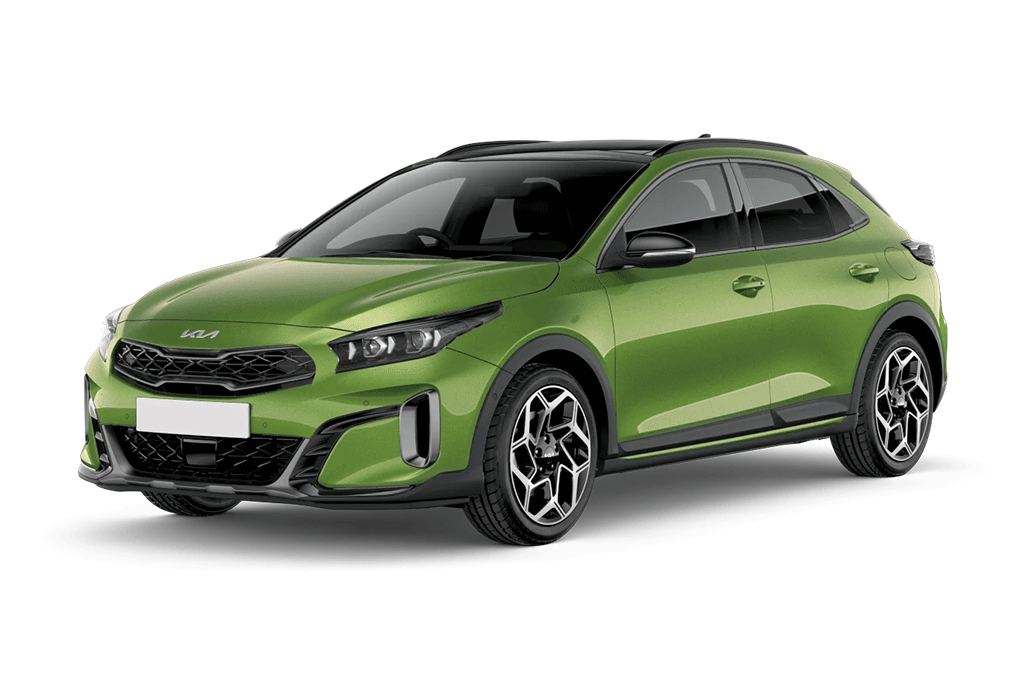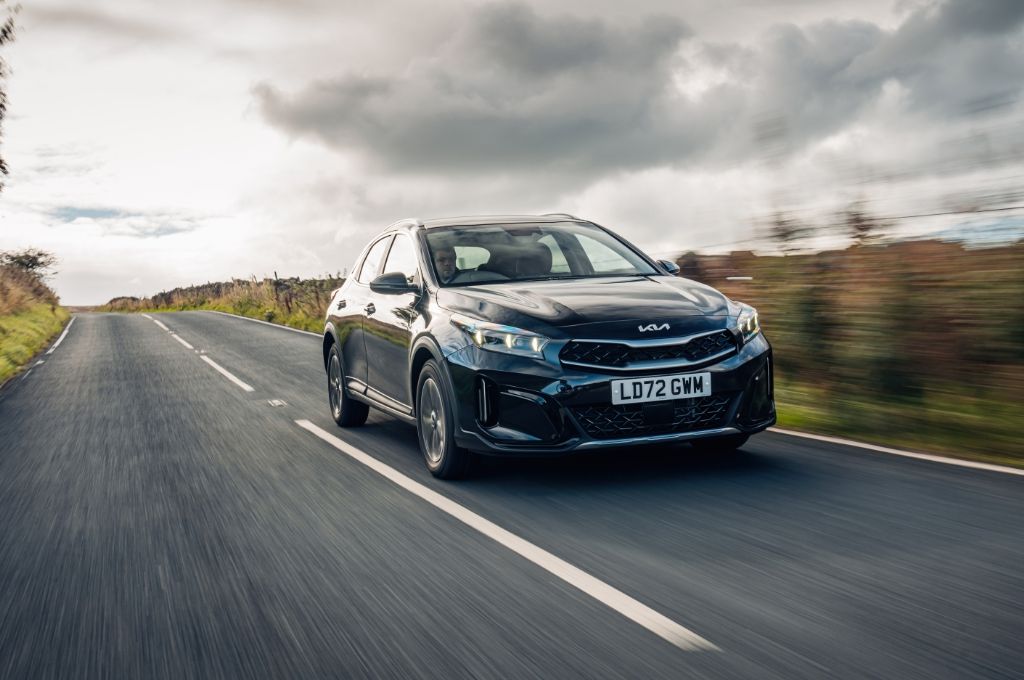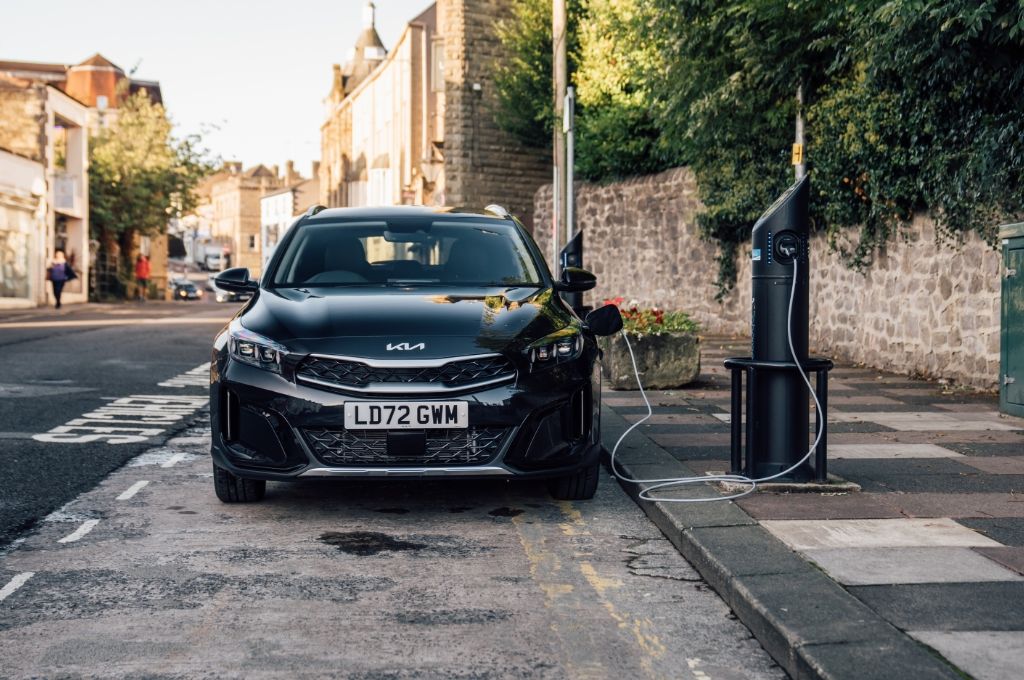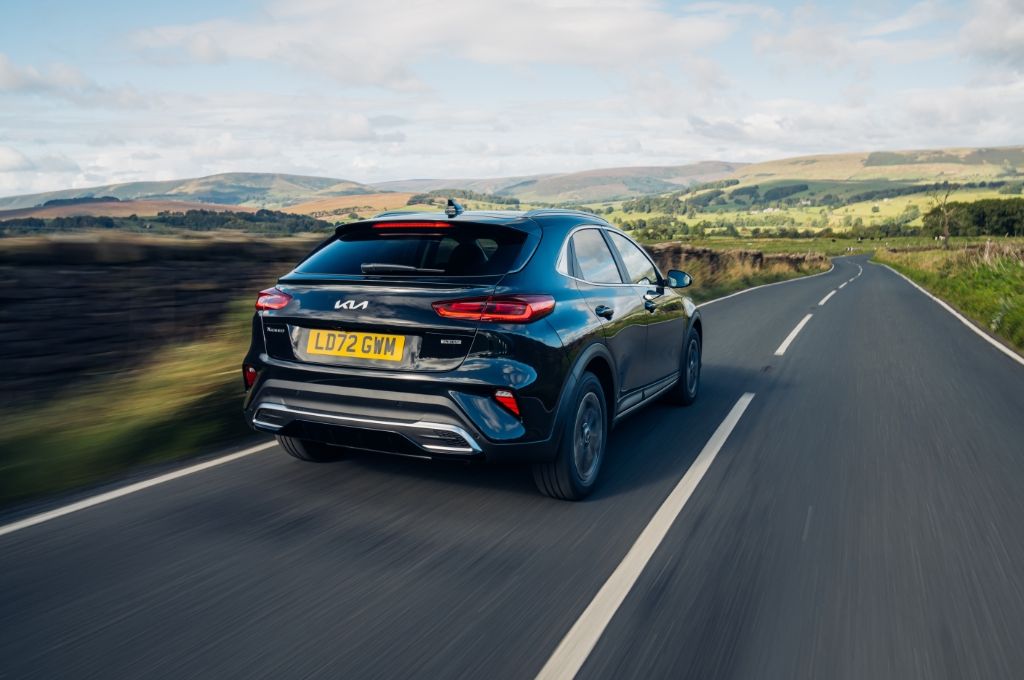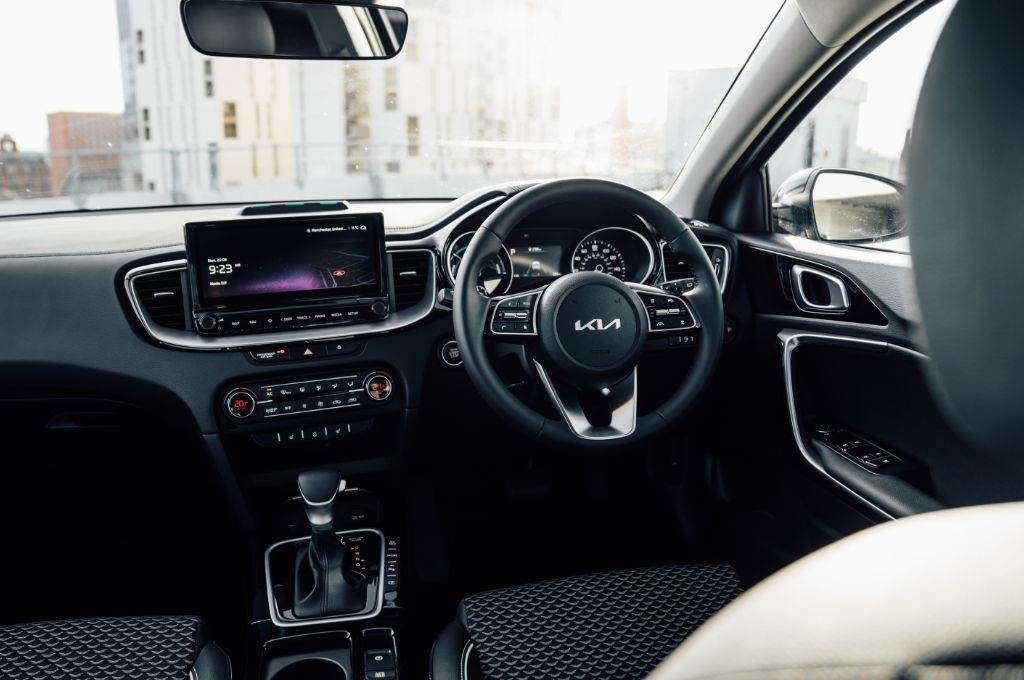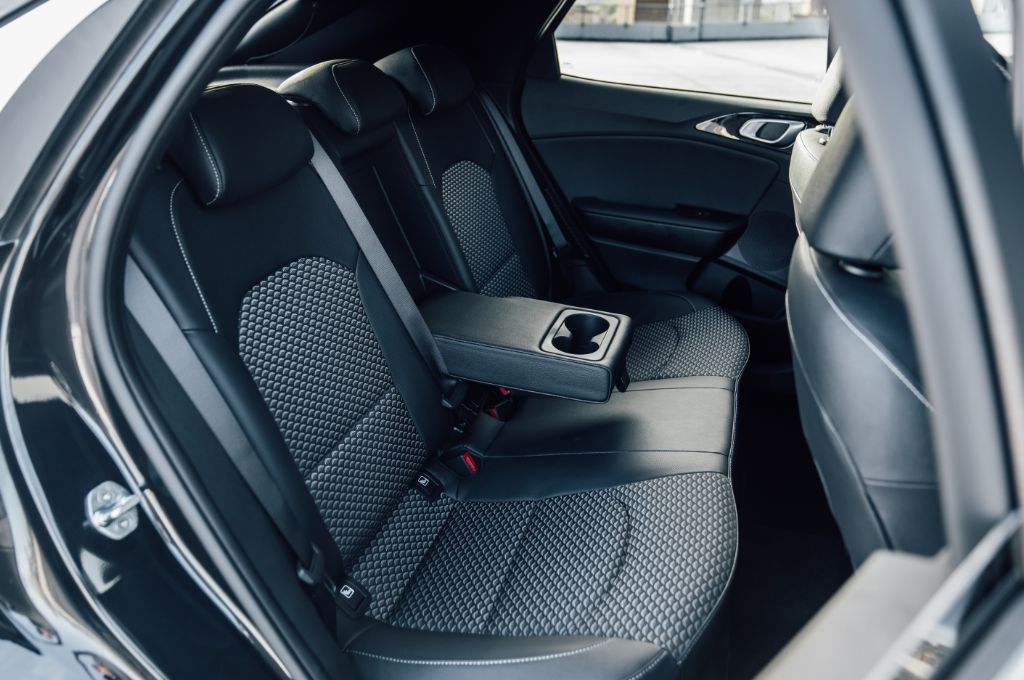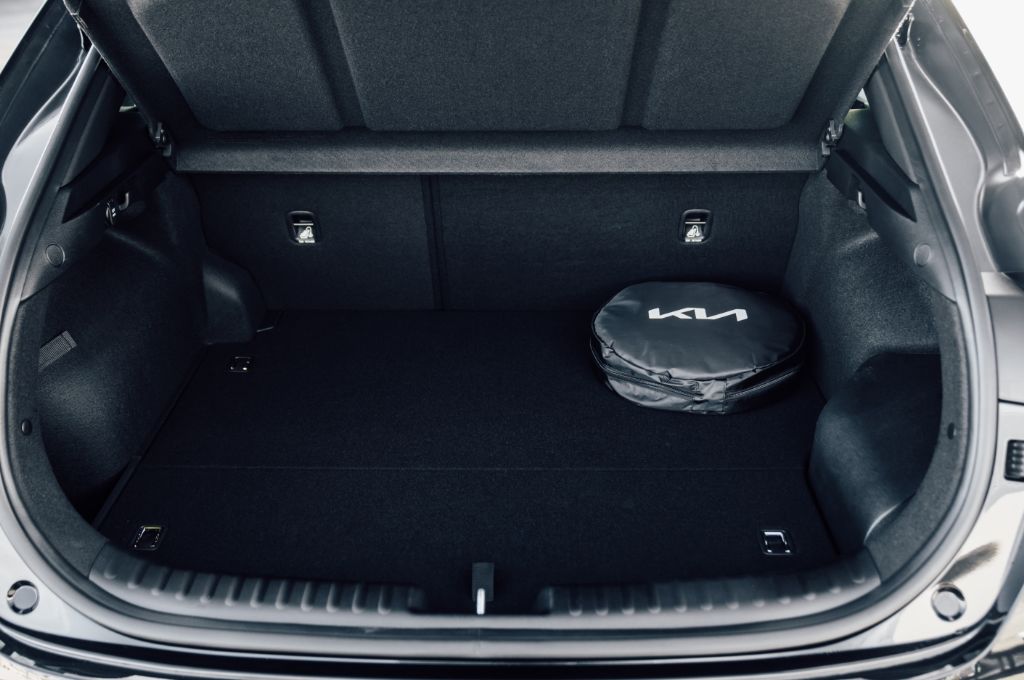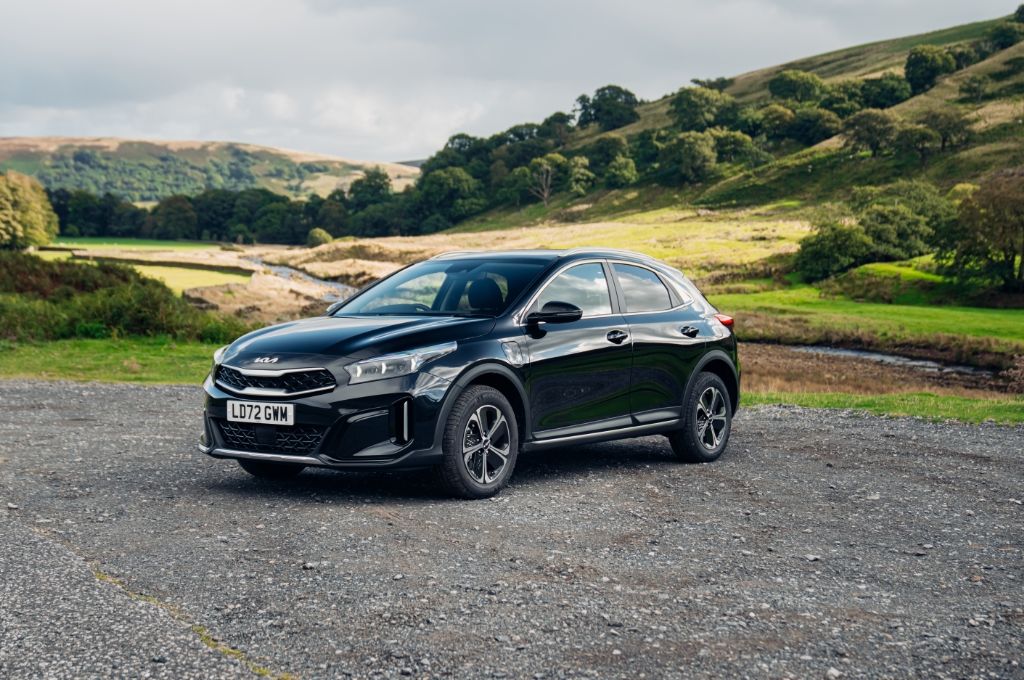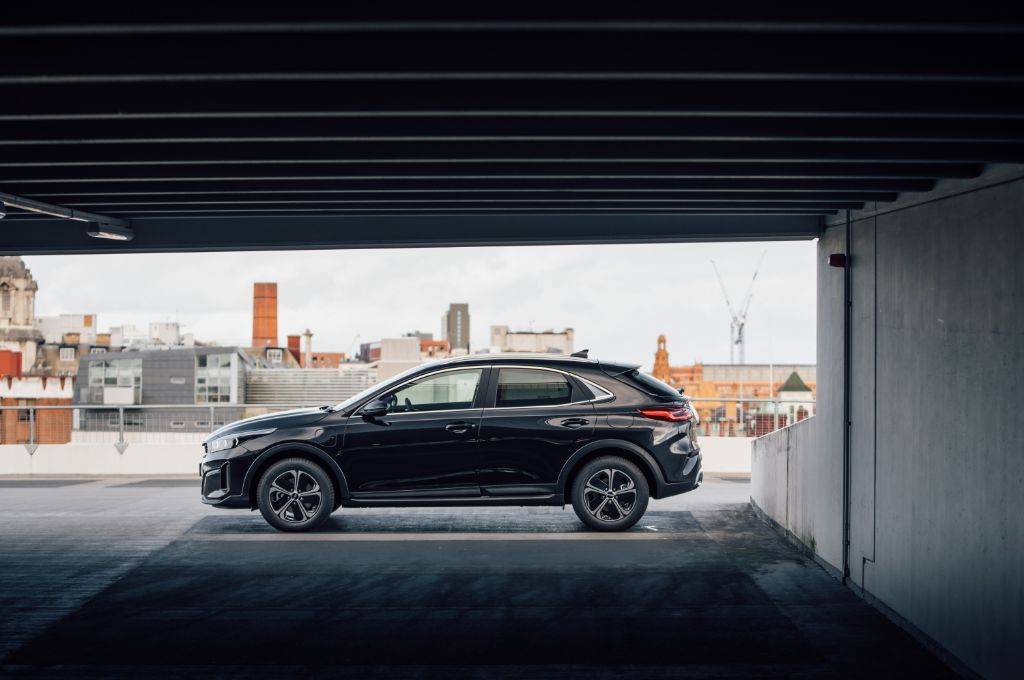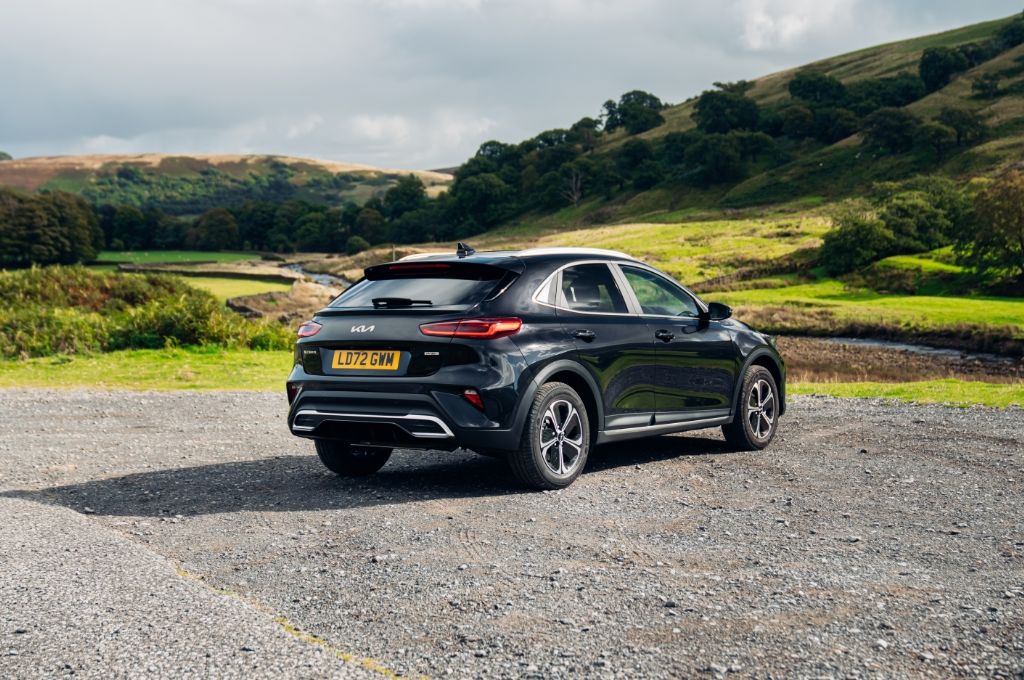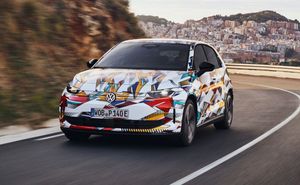Introduction and model history
The Kia Ceed family is a strange one, with a regular hatchback, estate, shooting brake and crossover variants all vying for drivers’ attention.
The XCeed we’re testing here is the last of those versions - effectively a jacked-up halfway house between the hatch and estate, with raised suspension and some plastic body cladding. It’s also the only member of the extended Ceed range that’s available with a plug-in hybrid powertrain alongside a purely petrol option.
There aren’t many direct rivals to this pseudo-SUV model. The hybrid Ford Focus Active is the closest but doesn’t offer a plug-in option and there’s a mild hybrid motor in the more SUV-like Mazda CX-30, but the main alternatives are plug-in versions of traditional hatchbacks like the Vauxhall Astra, Seat Leon and Peugeot 308.
Range, battery and charging
The Kia XCeed PHEV comes with an 8.9kWh lithium-polymer battery which the manufacturer says will provide up to 29.8 miles of all-electric motoring and up to 201mpg. If you never leave an urban environment, then Kia reckons you’ll get up to 36.6 miles.
In comparison, the Astra or related 308 offer official EV ranges of 39 or 35 miles respectively, as well as more power and lower emissions, while the Leon has them all beaten with its 40 miles of EV range.
As with any PHEV the official figures - particularly the mpg - need to be taken with a pinch of salt. We’d expect the XCeed’s real-world electric range to be in the mid-20s, with a further small reduction in particularly cold weather. And your fuel economy will depend on the length of trips you make and how you use the battery.
In the XCeed you can prioritise electric-only driving via the EV/HEV button, which is handy for low-speed urban trips, and could mean short journeys are completed without ever dipping into your fuel reserves. Alternatively, you can allow the system to automatically choose the most efficient use of its power, switching from electric to petrol to hybrid depending on demand and the charge in the battery.
Unlike many other plug-in models, the XCeed only accepts 3.3kW charging, which means a full charge will take 2 hours and 15 minutes and there’s no benefit to seeking out faster AC or DC chargers if you need to top up in public.
Practicality and boot space
While its exterior dimensions place the XCeed somewhere between the regular hatchback and the Sportswagon estate, Kia says that the crossover is roomier than both and its styling allows for passenger space approaching that of the much larger Sportage SUV. We’re not entirely convinced by that claim but there’s definitely space inside for four adults to travel comfortably, or room for a couple of kids’ car seats behind all but the tallest drivers.
Unfortunately, the addition of the PHEV battery eats significantly into the XCeed’s boot, cutting luggage capacity from 426 litres to just 291. That’s pretty disappointing for a car of this size - the Vauxhall Astra PHEV hatchback offers 352 litres while the estate has 516 litres - and means the plug-in XCeed has far less carrying capacity than any other member of the Ceed family. It's also less spacious than the Kia Niro, although the plug-in version of that car is currently unavailable.
On a more positive note, the XCeed PHEV does have a maximum towing capacity of 1,300kg, meaning you’ll be able to haul a trailer or caravan behind it.
Interior, design and technology
Kia interiors are usually well screwed together but slightly dull and the XCeed is no exception. The cabin layout is logical and unadventurous and there’s a mixture of soft-touch plastics, high-gloss black surfaces and chrome-coloured trim which feel built to last but don’t hit the premium ambience Kia is aiming for. The supportive seats are finished in a mixture of faux leather and patterned fabric and the overall feel is a match for the XCeed’s mainstream rivals without doing anything to stand out.
What it lacks in flair, it makes up for in usability, with large simple controls for the air conditioning and a 10.25-inch touchscreen with a quick, clear interface and useful physical shortcut buttons. There’s also a decent array of storage spaces around the cabin and USB chargers front and rear.
The XCeed has most of the connectivity and safety technology that we expect from new cars. That touchscreen features Android Auto and Apple CarPlay integration, although this is wired rather than wireless. It also comes with a seven-year subscription to the Kia Connect system, which includes sat nav with live traffic data, and information on points of interest and parking availability among other features. While there’s a lot available through the screen, the interface is clear and customisable, making it one of the easier systems to use.
On the safety front there’s the usual suite of camera and sensor-based features, with forward collision assist featuring pedestrian and cyclist detection, lane keep assist, blind spot collision avoidance assist and intelligent speed warning all present and correct. There’s also driver attention warning and, more helpfully, adaptive cruise control with intelligent stop and go, plus auto high beam.
Externally, while it’s clearly related to other Ceed models, almost every body panel is unique to the XCeed and it’s arguably the most interesting looking in the range thanks to a more rugged look that doesn’t stray too far down the faux off-roader path.
Motors, performance and handling
Unusually, the plug-in version of the XCeed is the less powerful of the two drivetrains on offer, and it shows on the road. The regular 1.5-litre petrol has 158bhp, while the 1.6-litre non-turbo hybrid offers a more modest 139bhp. That means a sluggish run to 60mph of 10.6 seconds and not much in the way of responsiveness when you’re on the move. The 60bhp electric motor offers a little jolt of initial pull - fine for around-town tootling - but it quickly runs out of steam on the open road.
Settle in at an easy pace, though, and it will tool along happily enough, keeping up with traffic without too much noise from the engine or any noticeable roughness as it transitions between EV and hybrid modes. There’s an occasional jerky shift from the six-speed auto gearbox but this is preferable to the tiresome drone of the CVTs found in many other PHEVs.
The XCeed has quicker steering than the regular hatch and a sport mode sharpens that further as well as boosting throttle response but it doesn’t add much in the way of dynamism. The handling feels well matched to XCeed’s performance - steady rather than sporty.
It uses softer springs than the regular hatchback, and this shows partly in improved ride comfort - which is admirably pliant - and partly in marginally less body control. Mostly, the XCeed feels safe, solid and comfortable. There’s nothing wrong with how it drives but nor does it involve the driver in any meaningful way. And don’t let its more rugged looks fool you, this is still a purely front-wheel-drive affair that won’t thank you for venturing off the beaten track.
Running Costs & Pricing
The XCeed range starts at a little over £24,000 and features four trim levels but the plug-in version comes in just a single specification, which costs £33,525.
That ‘3’ trim level sits between the GT Line and range-topping GT Line S and gets a healthy helping of standard equipment including 16-inch alloy wheels, all-round LED lights, tinted rear glass, keyless entry and reversing camera with rear parking sensors. Inside, there are heated front seats and steering wheel, dual-zone air conditioning and USB charging ports front and rear, along with the 10.25-inch touchscreen.
The lack of trim choice means if you opt for the PHEV you miss out on the fancier touches of the GT Line S - heated rear seats and 12.3-inch digital instruments, for example - but, day to day, you’re unlikely to miss most of them.
The nearest plug-in alternatives are the Astra and Peugeot 308, both of which start at more than £37,000, and the Seat Leon eHEV, which comes in at £35,550. While these are all more expensive than the Kia, they are also significantly more powerful, with better EV ranges and official fuel efficiency.
For company car drivers, the XCeed’s 32g/km official emissions is good news but the relatively low EV range means a BiK rate of 12%, while private buyers get a paltry £10 discount on their annual car tax.
Verdict
There’s plenty to like about the Kia XCeed. It’s good looking, comfortable, well equipped and comes with Kia’s unimpeachable build quality and seven-year warranty. The undemanding but uninvolving drive is nothing usual in the segment, so it’s just a shame that the XCeed PHEV loses out to other plug-ins where it matters - in range, performance and running costs - while sacrificing practicality with its much-reduced boot space.








